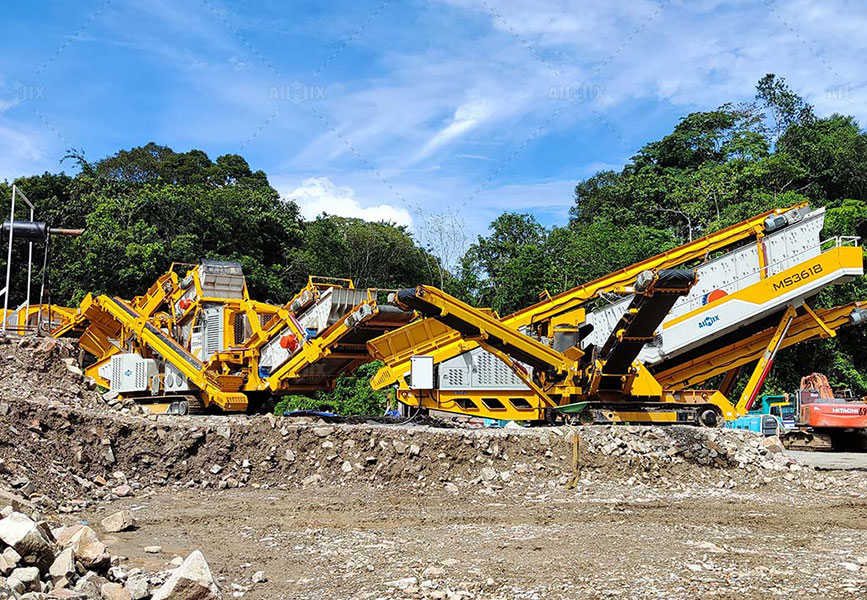Investing in a gravel crusher is a significant commitment, and protecting that investment requires a forward-thinking approach. The industry is not static; it is being reshaped by technological currents that promise greater efficiency, reduced downtime, and enhanced sustainability. Future-proofing your operation is not about chasing every new gadget. It is a deliberate, analytical process of identifying upgrades that deliver a tangible return by boosting productivity, lowering operating costs, and extending the functional lifespan of your stone crushing equipment. By understanding and integrating key technological advancements, you can transform your existing crusher from a simple machine into a resilient, intelligent, and valuable asset for years to come.
The Digital Nervous System: Integrating Automation and Data Analytics
The most profound shift in crushing technology is the move from mechanical operation to digitally integrated processes. This begins with the core control system. Upgrading to a modern Programmable Logic Controller (PLC) is a foundational step. Unlike simple relay-based controls, a PLC allows for the automation of complex sequences, such as startup and shutdown procedures, which reduce wear and tear on motors and drives. It can also monitor amp draws and automatically adjust feed rates to prevent choke-feeding or running empty, optimizing throughput and protecting the crusher from abusive conditions.

Building on this automated core is the integration of telematics. These systems act as the gravel crusher‘s remote voice, transmitting a constant stream of data on location, fuel consumption, production hours, and critical operating parameters like bearing temperatures and hydraulic pressures. This allows for remote performance auditing, enabling managers to identify inefficiencies and operator patterns that may be costing money. Furthermore, telematics provide early warning of developing mechanical issues, facilitating a shift from reactive to predictive maintenance.
To complete this digital ecosystem, consider retrofitting smart sensors. Load sensors on the crusher itself can provide real-time feedback to the PLC, allowing for dynamic adjustment of the feeder. Bin level sensors in the hopper can prevent overfilling and ensure a consistent, non-segregated feed to the crushing chamber. This network of data points creates a cohesive digital nervous system that not only protects the machine but also provides the analytical insights needed for continuous operational refinement.
The Durability Dividend: Advancements in Wear Part Technology
The profitability of a crushing operation is directly linked to the longevity of its wear parts. The constant, brutal abrasion of stone is a given, but the rate of wear is not. Recent material science innovations offer a significant durability dividend. One of the most impactful upgrades is the adoption of ceramic composite liners. These liners incorporate ultra-hard ceramic materials within a tough steel matrix. They offer exceptional resistance to abrasion, often outlasting traditional manganese steel by a factor of two or three. While the initial cost is higher, the reduction in change-out frequency, associated labor costs, and machine downtime results in a lower cost per ton crushed.

Looking further ahead, the industry is developing smart wear parts. These are liners, mantles, and concaves with embedded sensor technology. These sensors can wirelessly transmit data on remaining wear life, providing a precise forecast for part replacement. This eliminates the guesswork and safety risks of manual measurements and allows for parts to be ordered just-in-time, optimizing inventory and ensuring parts are used to their full potential without risking a catastrophic failure. This represents the next frontier in minimizing unplanned downtime.
The Sustainability Imperative: Energy and Environmental Upgrades
Future-proofing also means aligning with the growing emphasis on environmental stewardship and energy efficiency. Regulatory pressures and community relations make this an increasingly critical consideration. A highly effective upgrade is retrofitting the aggregate crusher‘s drive system. Replacing older, inefficient motors with modern, high-efficiency electric drives can yield substantial energy savings. For operations where grid power is unavailable or unreliable, exploring hybrid drive systems that combine a diesel generator with battery storage can smooth out load demands, reduce fuel consumption, and lower emissions.
Environmental controls are equally important. Advanced dust suppression systems that use atomized misting nozzles can capture airborne particles at the source—such as at feed points, crusher cavities, and conveyor transfers—far more effectively than simple water sprays. These systems use minimal water while maximizing dust control. Similarly, investing in acoustic enclosures or noise-dampening panels for the rock crusher machine and its associated motors can bring operations into compliance with local noise ordinances, reducing the impact on nearby communities and expanding your potential operating hours. These upgrades are not just about compliance; they are about becoming a better, more sustainable neighbor and preparing your business for a future where environmental performance is a key metric of success. By thoughtfully integrating these technological strands—digital, durable, and sustainable—you build a crushing operation that is not only productive today but also resilient and valuable tomorrow.
